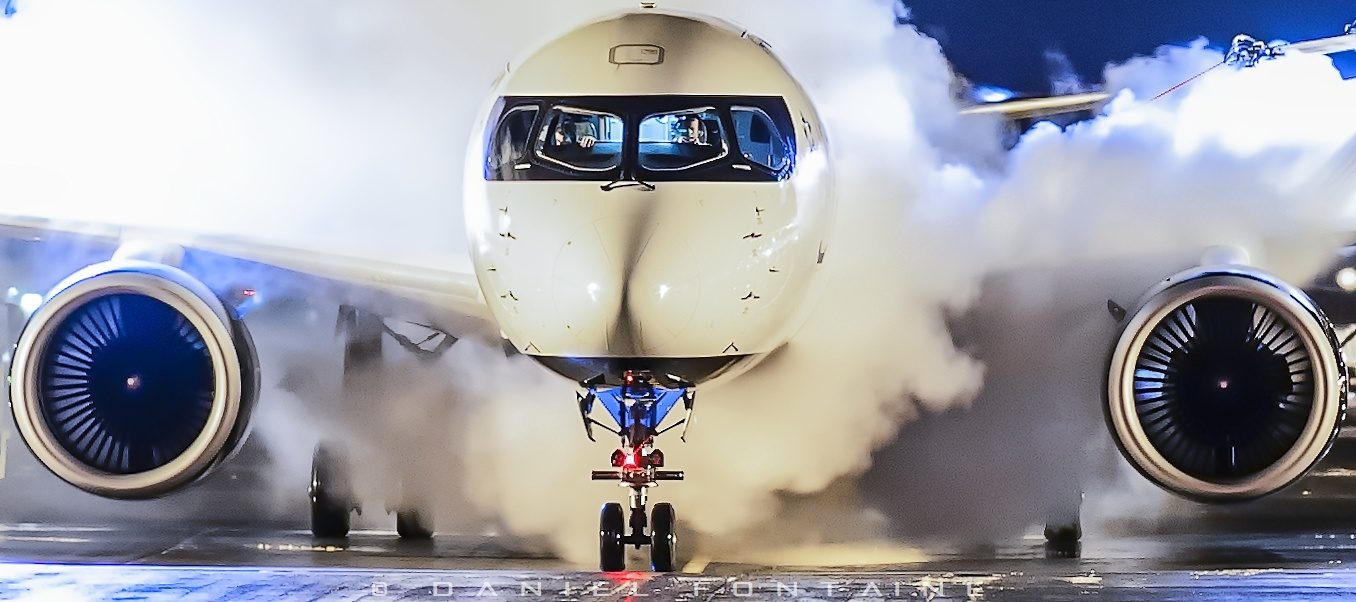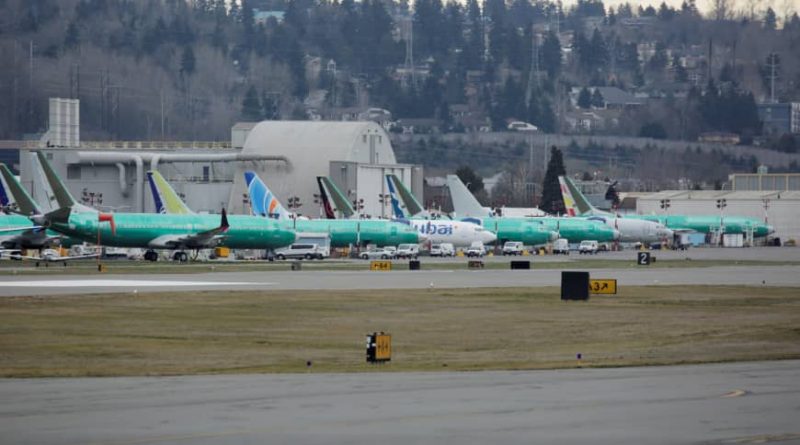Airbus-Boeing and the overproduction risk
In the first quarter of 2020, deliveries of civil aircraft of the Airbus-Boeing duo fell 42% compared to 2019. Airbus saw a decline of 50% while for Boeing it was 71%. It is obvious that COVID-19 is the main explanation for this sharp fall. But in addition to this major crisis, the health of the civilian aircraft market was affected by pre-existing conditions. In the present text, I look at these pre-existing conditions.
The fuel price
Every 20 or 30 years, a new generation of engines comes onto the market. The fuel savings they offer signal the retirement of older aircraft still in service.
From 2000 to 2014, the need for fuel efficient aircraft was exacerbated by a sharp rise in the price of oil. During this period, a barrel of US WTI oil went from $ 28 to $ 110 US. In 2008, it even hit US $ 140 mark before plunging to $ 35 un the beginning of 2009. It had gradually climbed back to nearly $ 110 a barrel by mid-2014 and then plunged again. Since then, every time a barrel of WTI hits the $ 60- $ 75 range, it plunges back.
It is important to understand that the fundamentals of the oil market have changed; The biggest drivers of change are the arrival of shale oil and shale gas. In its early days, mining techniques cost almost US $ 70 per barrel. But the improvements mean that it now costs nearly $ 40 to extract a barrel of oil from shale. In the United States, it is extremely easy to start fractionationning. The resource is on dry land and is quickly accessible, so as soon as the price of a barrel of oil goes up, the fractionation industry kicks in. The rapid arrival on the market of this resource then lowers prices.
Finally, there are the environmental pressures to get out of the oil age as quickly as possible. Thanks to the support of governments, alternative energies are becoming more and more affordable. In short, the price of oil will remain low for a long time to come.
The order boom
From 2010 to 2019, the Airbus-Boeing antagonists engaged in a fierce price war. The ultimate goal was to wrest control of the single-aisle market from the other. The result of this battle to end is a jam-packed single-aisle order book. Airbus-Boeing sold single-aisle aircraft by the thousands. From 2014, the order books were already filled to the brim.
The two manufacturers found themselves forced to increase production rates of their best sellers. Thus, the production of single-aisle aircraft has increased by almost 20% in 4 years. In 2017, the pressure on Airbus-Boeing meant that 1,089 single-aisle aircraft were delivered. This represents around 10% of the A320 and B737 family aircraft in service at that time.
The influence of leasing companies
Traditionally, leasing companies account for around 25% of orders for the Airbus-Boeing tandem. Their strong presence in the market allows them to determine the market value of aircraft. Leasing companies try to find customers first before placing an aircraft orders. But from time to time they also place speculative orders. In this case, it happens that a plane is placed with an airline only 12 months before its delivery. But most of the time lessors manage to rent 24 months before an airplane gets out of the assembly line.
At the launch of the A320neo and B737MAX, leasing companies placed speculative orders. In 2011-2013, some leasing companies anticipated a spiraling increase in the price of fuel. The proportion of airplanes ordered by lessors then rose above 30%. For the MAX it represented 40% for the first few years of production.
Prices weakening
During the period 2014-2018, the average growth in passenger revenues was 6.8% according to IATA. The average growth over a 10-year period was 5.5%. Normally, the withdrawal of old fuel-guzzling appliances should have compensated for the overproduction. But because of the low price of fuel, the cost of operating these old cuckoos remained competitive. Several airlines then embarked on an all-out growth plan. As of 2015, the growth of the air fleet was faster than the growth in traffic.
The inevitable was bound to happen and the market’s ability to accommodate more planes faltered. In early 2017, lessors were able to get for $ 375,000 per month for an A320neo and a B737MAX. This represented a monthly premium of $ 40,000 on the A320ceo and B737-800NG respectively. Then by early 2019, the premium for the A320neo was down to just $ 5,000 per month. For its part, the monthly rent of the MAX8 had fallen below that of the 737-800NG. According to analysis firm Cirium, leasing companies had between 50 and 150 B737MAXs that were not placed for the 2019-2020 production years. This situation explains why the rent of the MAX8 has fallen below that of the NG.
The MAX crisis
The MAX crisis arose after 2019 had began with a marked drop in the value of single-aisle aircraft. Then, overnight, 375 MAX were taken out of service and deliveries were suspended. This created a shortage that masked the two fundamental problems plaguing the single-aisle market. At the breginning of 2020, the value and monthly rent of single aisles had returned to 2017 levels.
COVID-19
With the arrival of COVID-19 in winter 2020, prices have started to fall again. Ishka Global publishes a weekly analysis on the value of used aircraft. For example, the monthly rent for a five-year-old A320ceo has dropped from $ 270,000 in January to $ 210,000 in August. For its part, the rent for the B737-800NG went from $ 282,000 to $ 220,000. These are very low prices that reflect the declining market value of used aircraft.
Right now, a ten-year-old A320ceo is worth barely $ 17 million or leases for $ 150,000 per month. This price, is significantly lower than that of a new A32neo which is about $ 45 million or a monthly rent around $ 345,000. With such prices, it is more economical to put a used aircraft into service. Airlines therefore have no financial incentive to accept delivery of new aircraft. The only reason they still accept it is the contractual obligation with the manufacturer. Given the dismal state of demand, every new aircraft delivered is one too many on the market. The downward pressure on the value of used aircraft will continue for a long time to come.
Some tough decisions
The meaning of the Airbus-Boeing duo existence is to build planes and deliver them. It is therefore inconceivable that the two giants will completely cease production while the crisis passes. However, this solution would be ideal in order to avoid adding to existing surplus inventory. Therefore, the duo have the difficult task of finding the right balance between production, inventory and airlines’ ability to pay. Forcing a customer to take deliveries is pointless if it forces them to bankrupt.
Airbus-Boeing must also keep in mind that the price of oil will remain low for a long time to come. This situation will have a decisive impact on the price of new aircraft and profit margins. Then there is the state of airline finances which will be another big concern. When will they be able to place new orders? In 2024, 25 or later.
Under these circumstances, Airbus and Boeing must therefore determine what level of suffering it is acceptable to them. The answer to this question is not the same for Airbus and Boeing. In a future article, I will tackle the Airbus situation.
>>> Follow us on Facebook and Twitter

